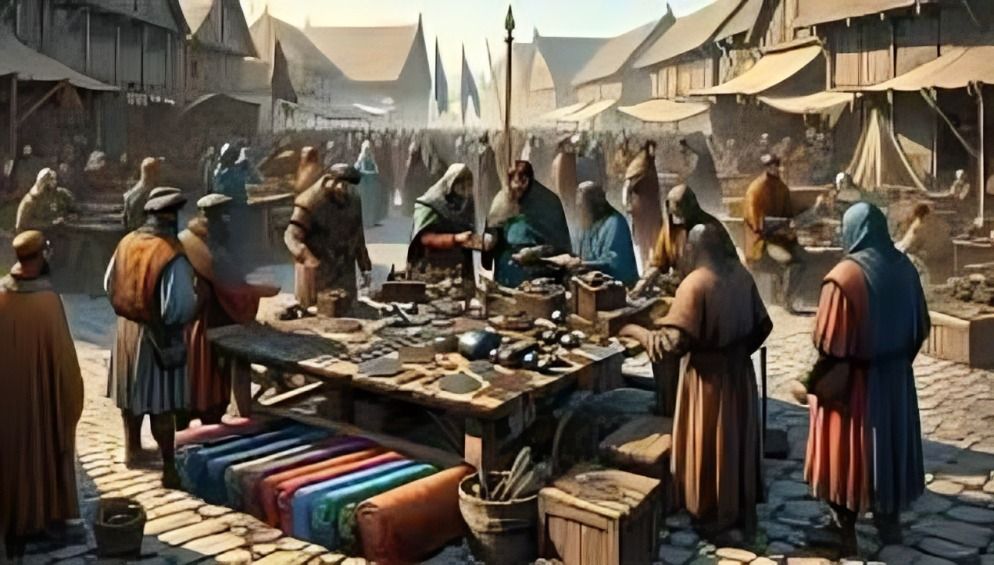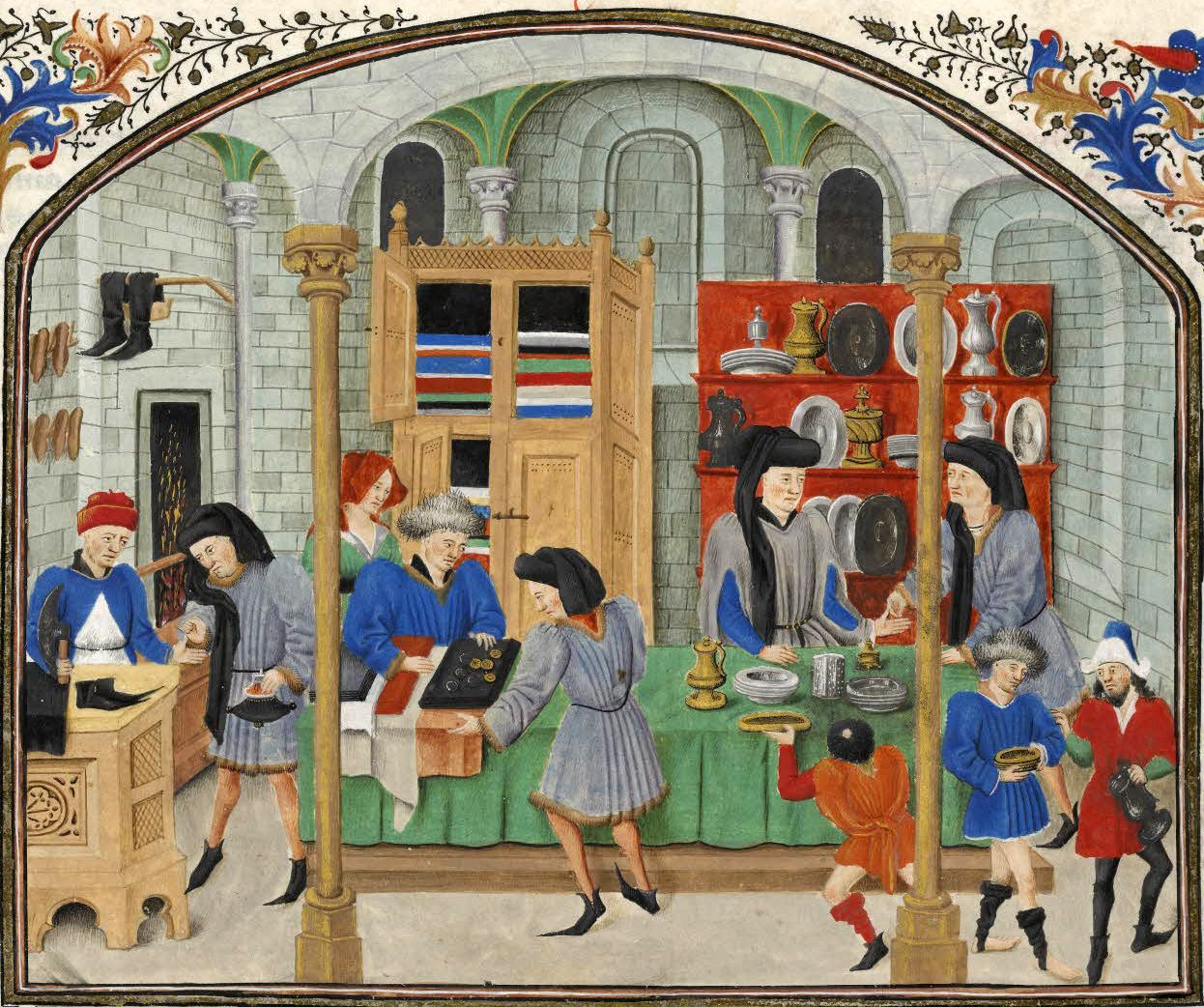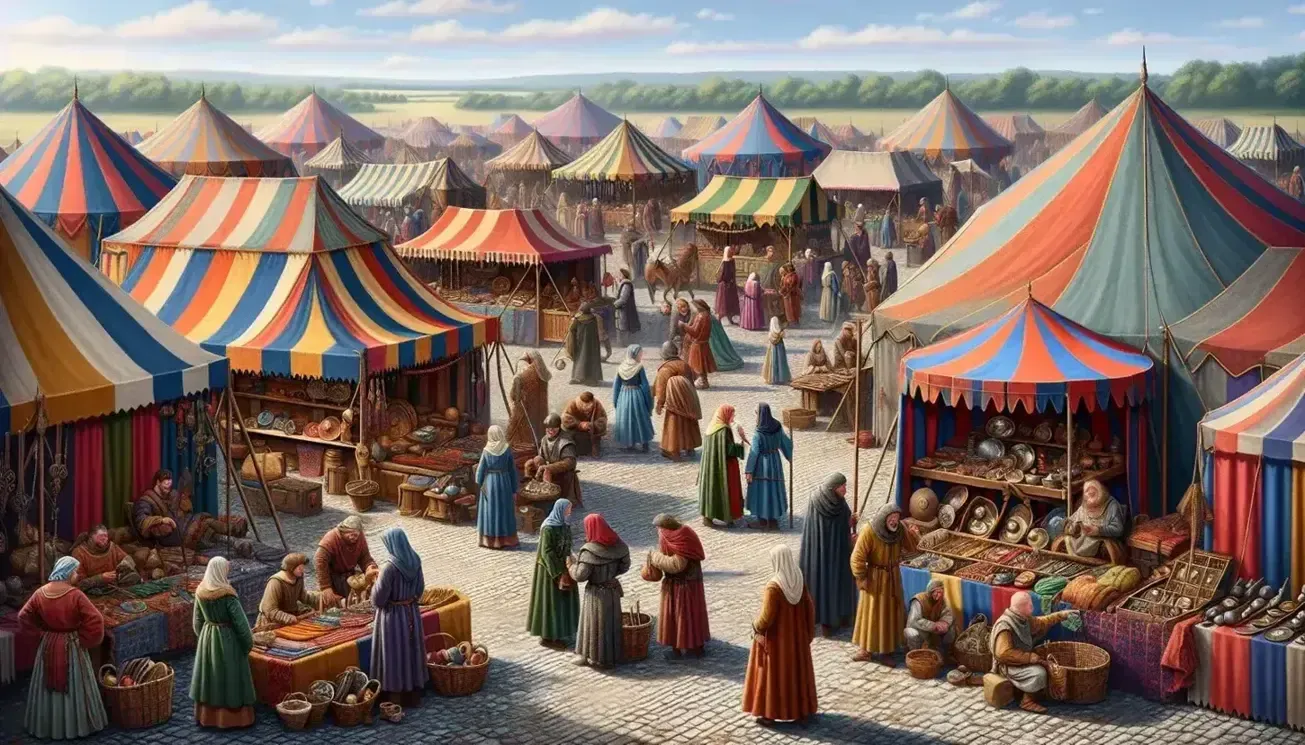
“
Trade and commerce flourished during the High Middle Ages, fueling economic growth and connecting distant regions. Merchant guilds, bustling markets, and trade routes like the Silk Road and Hanseatic League played pivotal roles in this transformative period. These intriguing facts about Trade and Commerce in the High Middle Ages highlight how advancements in trade networks, financial practices, and urban growth reshaped medieval economies. Discover the influence of trade fairs, innovations like banking, and the vibrant exchanges that laid the foundation for Europe's later economic and cultural expansion.1
1
”
Medieval trade and commerce grew significantly, providing even small communities with weekly markets and larger, less frequent fairs nearby, offering a wide range of goods for shoppers and small retailers. 1
Key trading hubs, such as Venice, Florence, and Flanders, became prominent centers of commerce, facilitating the exchange of goods like wool, silk, spices, and precious metals across Europe and beyond. 2
From the 9th century, improved transportation, banking and northern Europe's growth fueled international trade. English wool went to Flanders, Venetians expanded through the Crusades, and new financial tools funded global trade3
Markets and fairs were organized by estate owners, town councils, and churches, who, with royal licenses, aimed to generate revenue from stall fees and stimulate the local economy through increased commerce.4

The establishment of guilds in towns promoted regulated commerce by ensuring product quality, setting prices, and protecting the interests of both merchants and consumers, fostering economic stability.
The expansion of banking during the High Middle Ages played a key role in supporting trade, with institutions like the Medici Bank providing loans and currency exchange services to merchants and nobles. 5
Medieval banking involved pawnbrokers, moneychangers accepting deposits, and merchant bankers handling currency exchange, reflecting a broader financial system beyond simple intermediation.6
The Hanseatic League, established in the late 12th century, united Northern European merchant guilds and cities for political and economic protection amidst the feudalism-dominated late Middle Ages.7
Markets, licensed by monarchs, thrived in public squares, wide streets, purpose-built halls, and near castles or monasteries, serving as vital hubs for trade in villages, towns, and cities. 8

Market stalls, rented from estate owners or councils, grouped similar sellers to boost competition. Men sold meat and bread, while women, often the majority, handled eggs, dairy, poultry, ale, or acted as middlemen.
The commercial revolution shifted European trade focus from the Mediterranean to the Atlantic after 1488 and 1492. Maritime routes around Africa and trans-Atlantic trade led to the decline of overland routes like the Silk Road.9
The use of money gradually replaced barter in the High Middle Ages, as coins and currency became more standardized, simplifying trade and allowing for more complex economic transactions across Europe. 10
The increase in agricultural productivity during this period provided surplus goods, supporting population growth and creating more opportunities for commerce, as people had more disposable income to spend on non-essential goods.11
Luxury items from the East, such as spices, perfumes, and fine textiles, became highly sought after, contributing to the development of trade routes through the Mediterranean and the Indian Ocean.12

Trade fairs, popular in 12th-13th century France, England, Flanders, and Germany, offered diverse goods, competitive prices, and wholesale opportunities, with France's Champagne region becoming a renowned hub for such events.
Champagne Counts supported fairs in Troyes, Saint Ayoul, Bar-sur-Aube, and Lagny with security and officials. Traders from France and abroad sold wool, cloth, spices, wine, and diverse goods. 13
Medieval trade was risky due to war, weather, and loss of cargo. Wealthy investors mitigated risks by sharing ventures through stock, reducing individual losses from a single transaction.14
As stock transactions grew, stock exchanges emerged. The London Royal Exchange, founded in 1565 as a securities market, evolved into a full-fledged stock exchange by 1801.15
Governments influenced trade by granting royal monopolies, like Queen Elizabeth's to Walter Raleigh for broadcloth and wine. Colonial rivalries spurred the creation of monopolies like the East India Companies.16
The triangular trade involved Africa, the Americas, and Europe: slaves were shipped to the Americas, raw materials to Europe, and finished goods from Europe were sold back to the Americas at higher prices.17


